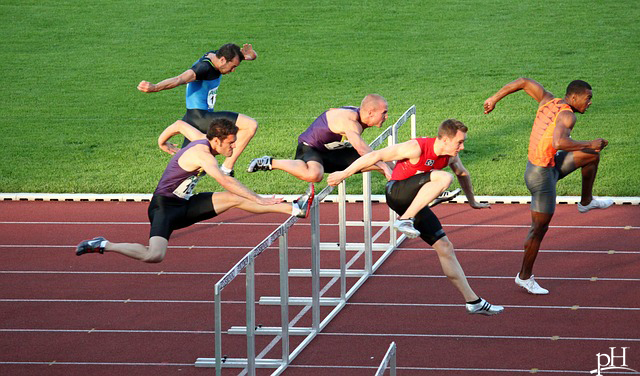Are your blood vessels aging gracefully? High-intensity intervals may help
10 years ago | Physical exercise
By pH health care professionals
Blood circulation is an important key to your life, health and vitality. It brings oxygen and nutrients to cells throughout the entire body. It stimulates metabolism and muscle growth. It helps you detoxify from excess chemicals and harmful substances. It helps repair damaged cells.
An average person’s heart pumps 60-80 mL of blood with every muscle contraction. That is roughly 5 liters (1.25 gallons) per minute. And this amount may be even higher during athletics, as blood cells transport necessary oxygen and nutrients to the muscles (for example, in Olympic cross country skiing, the amount of blood output may increase eight-fold to 40 liters per minute at maximal effort!). When blood is pumped from the heart, it travels through a system of blood vessels (arteries, capillaries and veins) to various parts of the body. But as you age, these blood vessels can become stiffer, narrower and less flexible, especially when there is elevated blood pressure. In extreme cases, this can lead to heart attack or stroke.
So how can you be proactive with your circulation as you age?
Interval training! High-intensity interval training is a type of exercise that can help you boost circulation and help keep your circulatory system in good health.
Brief spurts of high-intensity training can cause narrow blood vessels to dilate in almost the whole body, not only in the muscles being used, allowing for optimal circulation.
Is high-intensity training good for everyone?
Avid younger and middle-aged athletes would answer this question with a resounding “yes.” Someone who gets headaches after a seemingly small amount of exercise will disagree. Someone with heart failure may say “no thank you.”
However, research indicates that intermittent high-intensity training could be beneficial for more than just athletes. Most people could benefit! Even older individuals in their 60s and 70s can adapt to training and improve their muscle strength and endurance. Seniors doing bursts of maximum exercise for only 6 seconds a day had better health outcomes than those who did not. The goal should be to improve your individual fitness level.
You may want to try 60-120 seconds at max intensity levels on an exercise bike followed by two to four minutes of lighter-level exercise (such as 30 watts on an exercise bike). A set of interval training may include six to eight high-intensity and rest cycles. Two of these sets three times a week may be as effective as moderate exercise intensity at 30 minutes, five days per week. People who are older or not as physically fit may need to start with less time, and consult with a doctor to ensure they are exercising safely.
Enjoy Your Healthy Life!
The pH professional health care team includes recognized experts from a variety of health care and related disciplines, including physicians, attorneys, nutritionists, nurses and certified fitness instructors. This team also includes the members of the pH Medical Advisory Board, which constantly monitors all pH programs, products and services. To learn more about the pH Medical Advisory Board, click here.




Comments (2)
Guest
Intermittently increasing levels of cardiovascular training intensity can help at any age, even the older folks! Make sure you have a proper warm up and brief minor intensity peaks before the actual maximum effort. Naturally times for maximum intensity should be shorter as we get older. The author, MD.
Guest
The idea is that intermittent high intensity exercise is causing the heart to pump more and that we are breathing heavier to get more blood and oxygen to our cells. This also facilitates biochemical processes to generate more energy.
During high intensity exercise the body starts to build up an oxygen deficit (anaerobic threshold) That means cells desperately feel the need for more oxygen, but they don't get enough due to the high work load.
The key effect is that after high intensity exercise stops the a "reflex mechanism" starts to occur. Breathing starts to get easier and small blood vessels and capillaries open more than usual and allowing more circulation to the muscles and whole body. This is the basis to achieve optimal training effects and improving the conditioning of the circulatory system.
- The Author, MD -